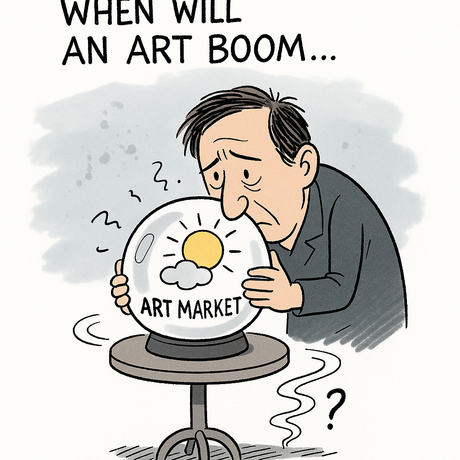The National Gallery Singapore is marking its 10th anniversary this year by showcasing what has become the world's largest collection of Singapore and Southeast Asian modern art. The milestone celebration features an ongoing exhibition titled "Between Declarations and Dreams: Art of Southeast Asia Since the 19th Century," which displays over 300 artworks from regional artists spanning from the mid-1800s to the present day.
According to curator Goh Sze Ying, the exhibition represents a decade of dedicated collecting and research efforts by the gallery. "We have been collecting and doing research on other Southeast Asia artworks so currently, we now have a collection of 12,000 artworks in total," she explained. The permanent exhibition, which debuted in 2015, presents a chronological journey through the art history of the Southeast Asian region, starting from the 19th century and continuing to contemporary times.
While the core narrative of the exhibition has remained consistent over the past 10 years, Goh noted that the gallery's expanding collection allows for regular rotations and updates. "A large part of the narrative of this exhibition hasn't really changed in these 10 years but with our large collection, some will find their ways into the exhibition through rotations, where we make small changes," she said. The curator acknowledged that mapping the chronological evolution of regional art presents challenges, but visitors can observe clear artistic developments as they move through the gallery's thematically organized spaces.
The exhibition is structured around four main themes that reflect the cultural and political transformations across Southeast Asia. The first section, "Authority and Anxiety," explores the dramatic cultural and political upheavals of the 19th century, when most Southeast Asian nations were under European colonial rule. This period saw direct impacts on local ways of life and traditional political power structures. Even Siam (now Thailand), which was never formally colonized, experienced significant Western influence on its artistic production.
One notable example from this period is the "Portrait of King Nangklao" by Phra Soralaklikhit, created in 1916. This work represents the beginning of royal portraiture in Siam, which was culturally significant during a time when common people were traditionally forbidden from looking directly at the King. The period also witnessed artists adopting new tools and styles with clear Western influences, as demonstrated by Indonesian artist Raden Saleh's "Merapi, Eruption by Night" from 1865, which reflected romantic and orientalist trends from his time studying in Europe.
Among the standout pieces in the "Authority and Anxiety" section are Raden Saleh's massive oil painting "Boschbrand (Forest Fire)" from circa 1849, measuring an impressive 300 by 396 centimeters, and Juan Luna's "España y Filipinas (Spain and Philippines)." These works demonstrate the scale and ambition of artists working during this transformative period in Southeast Asian history.
The second gallery, themed "Imagining Country and Self," focuses on artworks from the early 20th century. As colonial powers maintained their grip on the region, calls for independence and reform intensified, leading artists to express deeper nationalist sentiments while simultaneously experimenting with innovative artistic forms. This section includes works such as "River Valley in Java with Mt Gee and Pangrango in the Background" and "The River Citarum, Priangan (West Java), with Figures on a Tree-Trunk Raft" by Antoine Auguste Joseph Payen, as well as "A Lazy Afternoon" by Jan Daniel Beynon, all reflecting the artistic connections between Indonesia and Europe during the 19th century.
The third thematic section, "Manifesting the Nation," showcases how artists responded to nation-building efforts following World War II. During this period, artists grappled with the challenges of creating new national identities while also exploring international artistic movements such as abstract art. This section demonstrates the complex balance between local cultural expression and global artistic trends that characterized the post-war period across Southeast Asia.
The final section, "Re:defining Art," presents works created after 1970 that address traumatic historical memories while offering fresh perspectives on power dynamics, postcolonialism, and feminism. This contemporary section features Malaysian artist Redza Piyadasa's reconstructed work "May 13 1969," originally created in 1970 and intentionally set on fire by the artist in 1971. The piece serves as a powerful commentary on the racial clashes that erupted in Kuala Lumpur following the country's third general election, and represents artists' movement beyond conventional painting and sculpture toward installation art.
This final gallery section highlights the evolution of artistic mediums and approaches that emerged in the 1970s. Artists began experimenting with video, photography, performance art, and multimedia installations, expanding the definition of art beyond traditional boundaries. These works demonstrate how Southeast Asian artists engaged with global contemporary art movements while addressing specifically regional historical and social issues.
The "Between Declarations and Dreams" exhibition represents more than just an art display; it serves as a comprehensive visual narrative of Southeast Asian political, cultural, and social evolution over more than a century. Through careful curation and thematic organization, the National Gallery Singapore has created an educational journey that allows visitors to understand the complex relationships between artistic expression and historical change across the region.
The National Gallery Singapore's achievement in assembling the world's largest collection of Southeast Asian modern art reflects the institution's commitment to preserving and promoting regional artistic heritage. The gallery's ongoing collection efforts and research initiatives continue to uncover and document the rich artistic traditions that have shaped Southeast Asian cultural identity. The exhibition is open to the public daily from 10am to 7pm at the National Gallery Singapore, providing visitors with an opportunity to explore this remarkable collection of regional artistic treasures.































